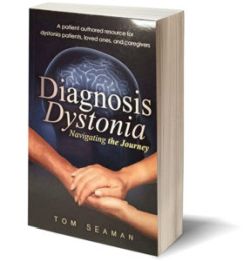When I think of anxiety, I think of the movie, Gremlins (1984). For those of you who have seen this movie, you know that feeding a gremlin after midnight turns it into a dangerous, scary, destructive creature. Actually, prior to becoming a gremlin they are called mogwai which is what the main character in the movie was. His name was Gizmo, a cute, fuzzy, friendly pet, but he had three rules to keep him that way. Do not feed him after midnight (he gets mean), do not expose him to light (he dies), and do not get him wet (he multiplies). I am only going to focus on the “feeding him after midnight” rule as it relates to the topic of this article about anxiety.
When I talk to people about anxiety, I often refer to it as a gremlin; more specifically, how many of us over worry and become anxious for feeling anxious, and how we add more fear to fearful situations. In other words, we feed it by giving the feelings way too much attention. This keeps the nervous system on alert (fight, flight, freeze stress response) when it is not designed to be on alert. This is only supposed to be activated in dangerous situations. Not when we are experiencing something uncomfortable. In other words, when we allow our worried thoughts to overcome us, we let out our inner gremlin, and as you can see in the image below, it is not a pretty sight. Interestingly, the word mogwai is the transliteration of a Cantonese word meaning “monster”, “evil spirit”, “devil” or “demon.”
The other day I was speaking with a coaching client about a treatment (Botox) she has been getting that helps her health condition (dystonia, a neurological movement disorder that I also have). Although she doesn’t want to get the treatment, it helps her. She feels better with it, but doesn’t like getting it because she would prefer to be all natural in her treatment approach. She is also fearful of not getting it because she worries she can’t function well without it. Her constant fear and worry about this mode of treatment, and whether to get it or not (which she always does) creates more anxiety than already exists in her life that she admits to having had for years. Her existing anxiety is strengthened with this constant worry. She created a gremlin and continually feeds it with more and more worry.
Logically to her it doesn’t make sense that she would fear this treatment that helps her so much, but emotionally it does because anxiety is very good at distorting reality. For example, some people have anxiety to such a degree that they can be safely sitting on their living room couch watching TV yet feel as if they just saw a bear on their front porch. This is a situation when the fight/flight/freeze response should naturally kick in to protect us, not when we are safely protected in the comfort of our home.
I shared with my client the gremlin story as a way to for her to visualize what she is doing every time anxiety, worry and fear set in and she reacts to it with more anxiety, worry, and fear. We discussed how her thoughts and feelings were feeding the gremlin, or anxiety, and making it worse. Since she was going to get Botox regardless of her feelings about the treatment, I encouraged her to switch her anxiety and distaste for Botox into gratitude. With this treatment she feels better so it serves a positive purpose. Therefore, rather than look at each upcoming treatment with dread, I suggested she look forward to it with joy and gratitude, so she can switch out of the fear response she is having, which spills over into other areas of her life. The same way cute and fuzzy Gizmo becomes a mean gremlin when you feed him after midnight.
When we have anxiety, we often feel things like sweaty palms, a racing heart, dizziness, excessive worry, unclear thoughts, and muscle tension, among others. Many people become fearful of these feelings which makes their anxiety and fear worse, just like my client. Rather than worry about the natural feelings that come with anxiety, let them be what they are and practice becoming a third party observer. For example, if your heart races, do not become afraid. Instead, think of how healthy your heart is to be able to beat that fast. You can do the same with all your bodily sensations that accompany anxiety and fear.
ALSO, remind yourself that this is just anxiety. It’s normal and it’s okay to feel this way. There is no need to be alarmed above and beyond what we already are (feeding the gremlin). Just like anxiety suddenly comes on, it will pass. Tell yourself this, over and over and over if need be. Don’t keep feeding the gremlin with more anxious, fearful thoughts. Let them come and let them go.
This is vital because whenever we have an unpleasant physical sensation, such as pain, if we react to it in an alarming way, the body produces more adrenaline, which worsens the pain because of increased muscle tension. By living in this heightened state of stress, it keeps anxiety and pain alive. Tensing up then becomes habitual and we forget how to relax, keeping us in a chronic state of anxiety where it is impossible for healing to take place. When we instead learn to flow with the pain and not react to it as something to fear, our anxiety levels are lowered.
The key to switching out of any anxiety state is to fully experience and accept all the uncomfortable feelings and allow time for them to pass. Let them come. Let yourself feel all of it. Breathe and let your rational mind enter. Speak to your anxious thoughts with that rational mind, understanding that these are just harmless thoughts that have no meaning other than what we choose to give them.
From personal experience, this is SO MUCH easier said than done which is why letting go needs to be a daily practice with steadfast dedication. Changing our mindset involves small, repeated steps. Each step builds on the one before it, and this takes time. Be okay with this. There is no rush. Remember that your mind has been doing what it has for a while and it will take time to unlearn its habits. Be patient. Be kind to your Gizmo so he doesn’t become a gremlin.
Whenever you feel yourself being overly anxious or inappropriately fearful, remember that you are “feeding the gremlin after midnight.” Distract yourself, change your thoughts, replace your thoughts with new thoughts that are calming, repeat them over and over and over and over and over to break the pattern of the broken record of fearful and anxious thoughts, meditate, breathe, go for a walk, talk to someone; do whatever you need to do to not feed that gremlin!
Resources:
Diagnosis Dystonia: Navigating the Journey by Tom Seaman
Beyond Pain and Suffering: Adapting to Adversity and Life Challenges by Tom Seaman
Hope and Help for your Nerves by Dr. Claire Weekes
Pass Through Panic by Dr. Claire Weekes
Reversing Chronic Pain by Maggie Phillips
Mindfulness for Beginners by Jon Kabat-Zinn
Anxiety Disorders and Phobias: A Cognitive Perspective by Aaron Beck and Gary Emery
_________________________________













